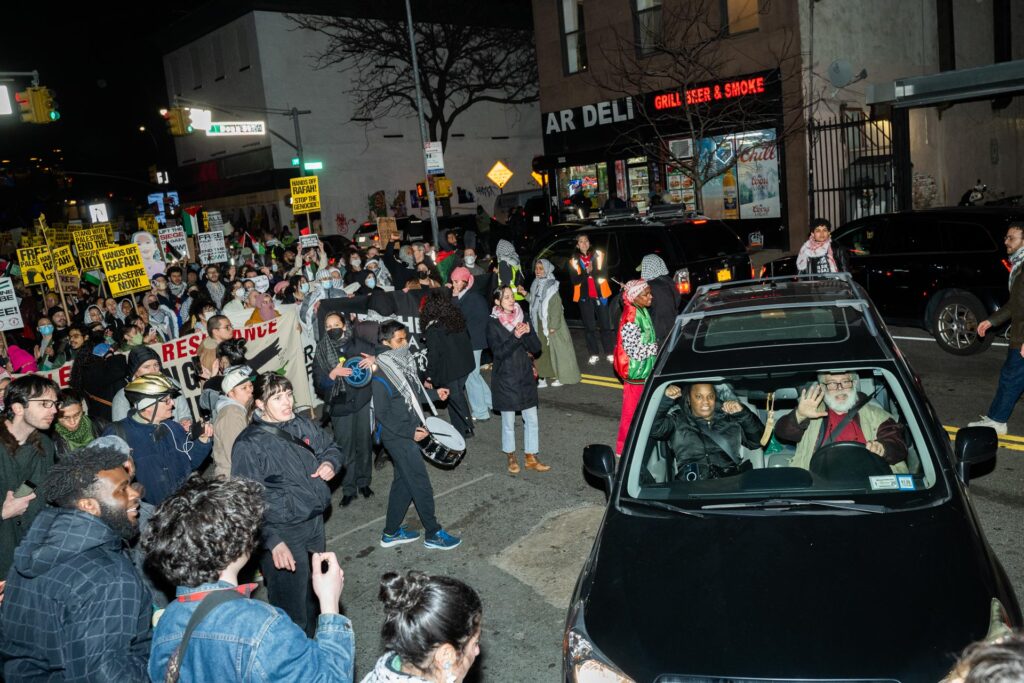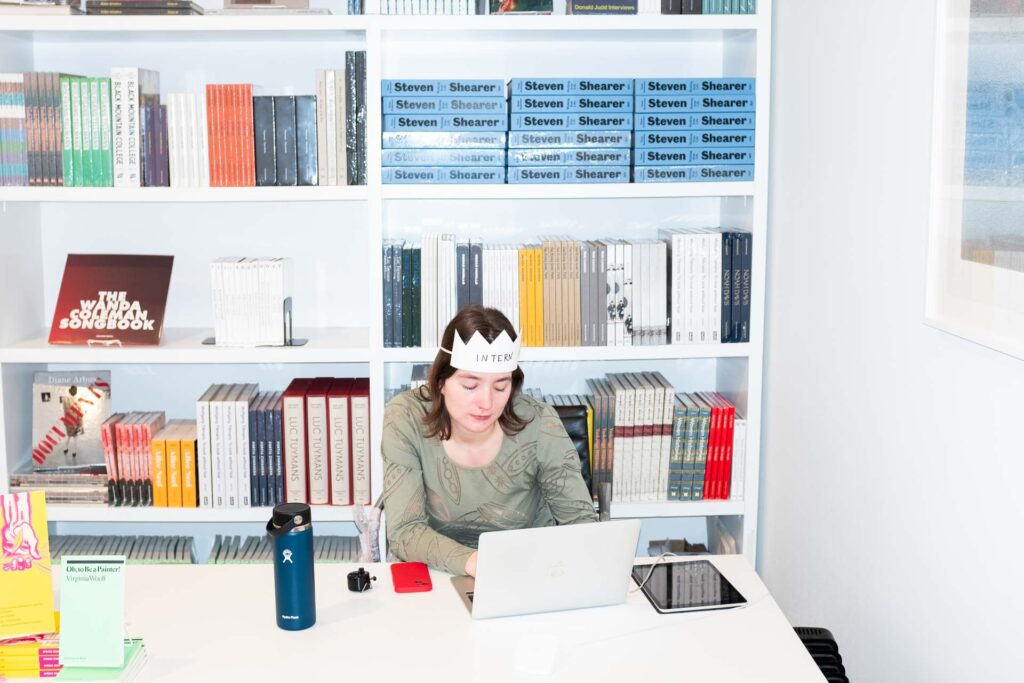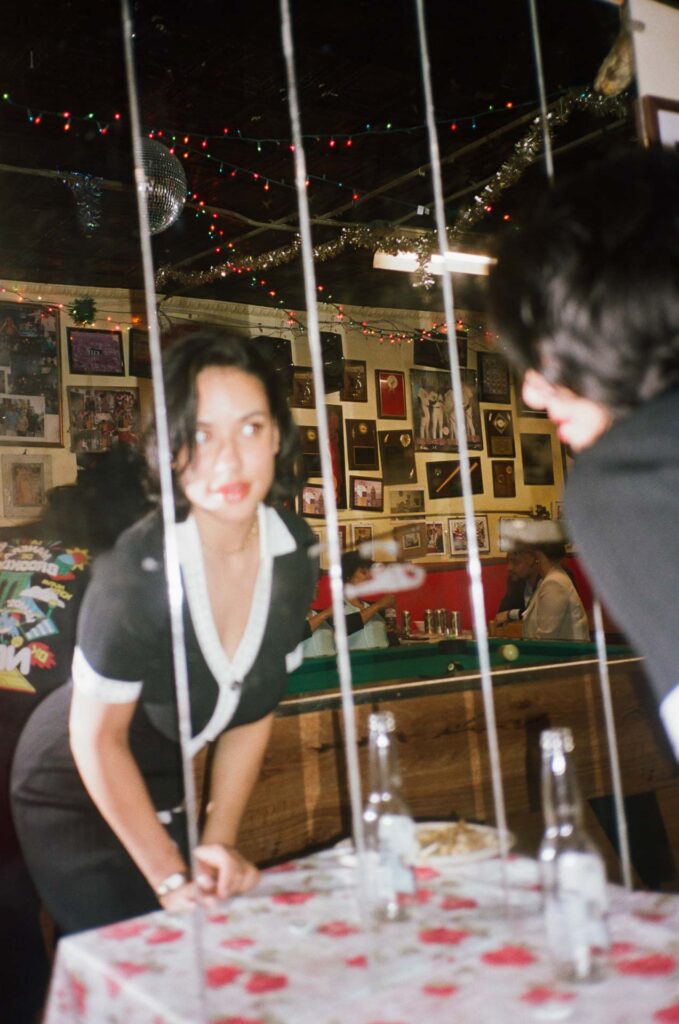The text was originally published in the brochure of the exhibition of Nik Erik Neubauer: White Smoke, Brown Glare at Cankarjev dom, Ljubljana (5 February – 18 April 2025) and UGM – Maribor Art Gallery (31 May – 26 June 2025).
In Taxi Driver (1976), director Martin Scorsese sets the personal drama of his protagonist, war veteran and night-shift cab driver Travis Bickle, in a decadent and decaying New York, a city facing a social and ethical crisis in the wake of the changed socio-political circumstances and the economic recession of the 1970s. He foregrounds the urban alienation which, in times of adversity, may lead to disintegration of any social cohesion. Even today, New York continues to be a brutally Darwinist city affording unrivalled opportunities for climbing the social ladder, yet very few succeed in rising through the ranks. In an era of the ubiquitous commercialisation of life, driven by the imperative of success, consumerism and media spectacle, it has even more evidently become a city where low- and middle-income population leads a meagre existence. Nevertheless, the city continues to attract new aspirants.
In the late 19th century and the first half of the 20th century, New York City was a promised land, a springboard for success in the New World. The colonisation of North America was brutal, as the white settlers – many adhering to libertarian principles – sought to carve out a space for themselves, a place of their own under the sun, removing and virtually exterminating indigenous peoples in the process. The area today known as New York City was one of the native tribes’ strongholds, settled for its favourable location, as well as abundant water and natural resources, until finally colonised in the 17th century. In the industrial age, it became a symbol of a modern metropolis, a financial and cultural hub that attracted ever new immigrants. Throughout a period of gradual decline, it retained its status as a desirable city also thanks to effective marketing and a thriving cultural industry, most notably manifest in the designer Milton Glaser’s I ♥ NY campaign, Liza Minnelli and Frank Sinatra’s hit song, the Sex and the City series and films, and reality shows such as The Apprentice. It remains an important centre of modern and contemporary art and one of the most photogenic and photographed cities.
Photographer Nik Erik Neubauer was fully conscious of these circumstances when he arrived in New York City for his one-month residency. Ever-present was the question of what else is there to photograph in a city whose image has long since become iconic and firmly lodged in cultural memory. He was also aware of the inevitable baggage of awe he felt for the city that has provided a setting for many great success stories. William Klein’s, Helen Levitt’s and Garry Winogrand’s street photographs have been indelibly etched in human history also due to the fact that (many of them) were taken in New York.
But even a city like New York is constantly changing, in step with the social, economic and cultural circumstances. And not necessarily for the better. After a heroic period in the first half of the 20th century and a decline in the 1970s and 1980s, in recent decades New York has shared the fate of cities swept by a wave of gentrification, in line with the neoliberal agenda. The speculative real estate market has further normalised the stratification of society between wage labourers who have to work for a living and capital owners who only need to cash in their assets. Nevertheless, a wide variety of communities, both ethnic and interest-based, keeps on living in New York, persevering stubbornly and tenaciously, thus taking a collective swing against the uniformity of a city increasingly dedicated to economic elites – like practically every major city in the modern world.
In his photographs, Neubauer captured the less visible side of New York, whose key to survival are a collective mindset and civic activism. He captured the social strata that defy class divisions and political uniformity. He focused on the verism of the given moment, a representation that can diverge completely from dominant discourses. He documented the protest movement calling for an end to the genocide in Palestine in which the US is deeply complicit; the city of former colonists is standing up to oppression on the grounds of nationality or religion. He also documented the vibe of a city marked by harsh social injustice that nonetheless expresses remarkable solidarity and compassion. Neubauer’s photography is defined by social engagement of the kind that can only be achieved through a generous dose of the old-fashioned humanism so characteristic of documentary photography in the second half of the 20th century.
His photographs show both social conflicts and people’s resistance to certain norms and clichés. Neubauer’s insights into the city’s organism somewhat disproved the thesis about the arrogance and apathy of urbanites developed by the publicist Wolf Schneider in his book Babylon is Everywhere (1963). Schneider maintains that a blasé attitude and over-saturation exist among the inhabitants of metropolises, who are thus no longer amazed nor impressed by anything. Despite the prejudice that urban residents tend to be haughty, New Yorkers fight against this kind of alienation with friendliness. On the streets of New York City, in its bars and clubs, it is easy for a person, even a casual visitor, to engage in conversation with a stranger they may never see again. Solidarity is particularly inevitable for the underprivileged residents: universally united by their social and class status, they cannot afford to be individualistic and alienated, but resist dehumanisation and injustice through collective consciousness.
© Miha Colner, January 2025






